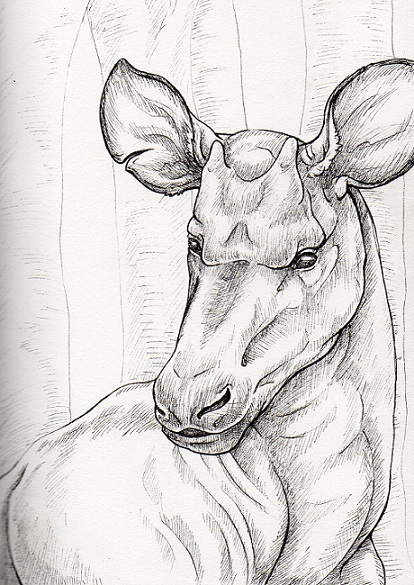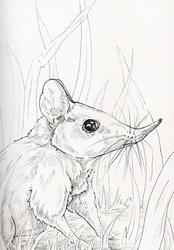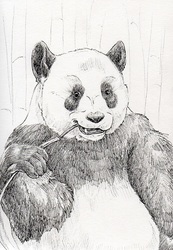Sign In
CloseToday's Spirit Guide is Okapi! If you have been stifling yourself lately to fit in with others, now is the time to stop! Shine bright in the ways that you make you unique. It may be important to listen and observe without speaking in the coming time. Although it will require meditation to exercise this skill so that silent observation does not become across as an awkward or clumsy behavior. Expand this listening to the spirits. Be open to hearing messages that may come to you for you will experience a heightening of your clairvoyant abilities. The Okapi spirit guide is known for it's connections to uniqueness, observation, clairvoyance, invisibility, vigilance, and connection to the hidden spirits around us. Okapi comes as a reminder to practice balancing being unique and individual with being unheard and unseen. This skill will be a great aid throughout life. Be proud and confident in who you are, but there is no need to strut or show off. Take time to meditate with focus on connecting to the spirit realm. This may be aided by spending time our in nature. Practicing in such a way can teach us how to listen for the invisible, see hidden opportunities, and hear messages from others. The stripes of an Okapi symbolize polarity and teach us how to balance opposing forces. People who connect with Okapi are often quiet types who enjoy solitude. They may have had a rough childhood due to their unique attributes or hobbies, but often bloom into confidence as they find pride in their uniqueness. This leaves Okapi types will an ability to aid others in teaching life lessons. These individuals usually possess a heightened clairvoyance and adaptable abilities to complete goals.
Okapi, Okapia Johnstoni, are herbivorous mammals that can live up to 30 years in the wild. These shy and secretive animals are a hodgepodge of attributes that had many cultures believing they were nothing more than myths. They are very real, however, and are actually one of the remaining ancestors of the Giraffe. Okapi and Giraffes share a ancestor that lived around 16 million years ago called a Canthumeryx. After this species, the family tree broke into two branches. One containing the Giraffe and the other with the branch that would contain Okapis. Okapis possess a similarly long neck and long, prehensile tongue that allows them to reach high branches where they strip them for leaves. They are also mistaken as being a part of the Zebra family due to the striking horizontal stripes across their lower legs and rear. Male Okapi possess two small, skin-covered horns atop their heads which is not present in females. An adult Okapi stands around 5 feet tall and can weigh over 600 lbs. Females will be heavier than males with a weight that can reach over 700 lbs. Okapi are found only in a secluded area of central Africa. They prefer dense forest habitats where they can easily hide and are generally found within the Ituri Forest of the Democratic Republic of Congo. These solitary animals will wander regular paths in search of food with most of their activity happening in the afternoon and evening. Their large ears work to alert them to nearby predators. At times, groups of Okapis may come together to eat in small groups. During these times, they may even groom or play together. When grooming, their tongues are so long that they can clean their own eyes and ears. Okapi will mark their territory by rubbing their necks on trees as well as using scent glands located on their feet that releases a sticky, tar-like substance. When it rains, their thick, oily fur keeps them dry. Communication occurs through the use of a quiet chuffing sound. The diet of an Okapi consists of primarily plant matter such as twigs, leaves, shoots, berries, and fruits. Although they will even consume fungi as well as a clay that provides them with important minerals and salts not found in their herbivorous diet. They are even known to eat plants poisonous to other animals and humans. When drinking, they must spread their legs wide and bend down similarly to Giraffes. When reproducing, an Okapi female will hide away in the dense forest to give birth to one baby called a calf. Able to stand and walk within 30 mins of birth, these calves already weigh around 35 lbs and stand taller than 2 feet. For the first two months, the Okapi calf will stay hidden in it's nest while it grows. In order to avoid being found by predators, the calf won't even defecate until up to 8 weeks after being born. They are weaned around 6 months of age, but will continue to nurse for over a year. While they will triple in size by 2 months old, Juvenile Okapi will not reach their full size until around 3 years of age.
Submission Information
- Views:
- 464
- Comments:
- 0
- Favorites:
- 0
- Rating:
- General
- Category:
- Visual / Traditional




